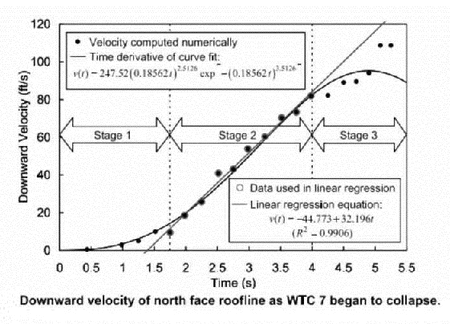Well, that didn't take long. In answer to your question, I do want to explore it. We'd have to agree about the parameters first though (nothing complicated).... What say you?

You've already set the parameters!
In a race to ground, all naturally failing load bearing structures, to one degree or another, will prevent a load from falling as fast as a similar weight dropped from the same height at the same time falling through air.... There are no known exceptions.
Here is a failing structure.

Are you telling me that no matter how much that load increases, there is no chance for that column beneath it to EVER reach zero resistance?
And you keep avoiding my other question.
When the entire roofline started to descend, does that mean explosives were simultaneously set throughout the entire structure? I mean, the ENTIRE roofline across the building descended at the same time right?
That's a failing structure? Because I've been checking on it over the last couple of days. It looks pretty stressed out man, but it's holding.
This is a failing structure....
....and just like the other failing structure I posted....
....in a race to ground it will not be the same fall time for the falling load as it will be for a similar weight dropped from the same height at the same time falling through air.
All I'm saying is that naturally failing load bearing structures, to one degree or another, will always prevent a load from falling as fast as a similar weight dropped from the same height at the same time falling through air, and that there are no known exceptions.
Obviously, any structural component can reach a point where it no longer offers any resistance to the load above it. It happens all the time, either because of overloading (above) or damage to the load bearing structural component (below).... but it can't go into free fall unless/until structural failure is complete (bifurcation), which takes time. Only after bifurcation occurs can the load go into free fall since, as long as any part the column continues to offer any resistance, some of the falling load's potential energy will continue to be used for the purpose of overcoming it, so not all of its potential energy will be converted into motion, which is the definition of free fall....
For gravitational acceleration, all the potential energy of a falling object due to gravity must be converted to motion. It's that damn Newton guy again!
















